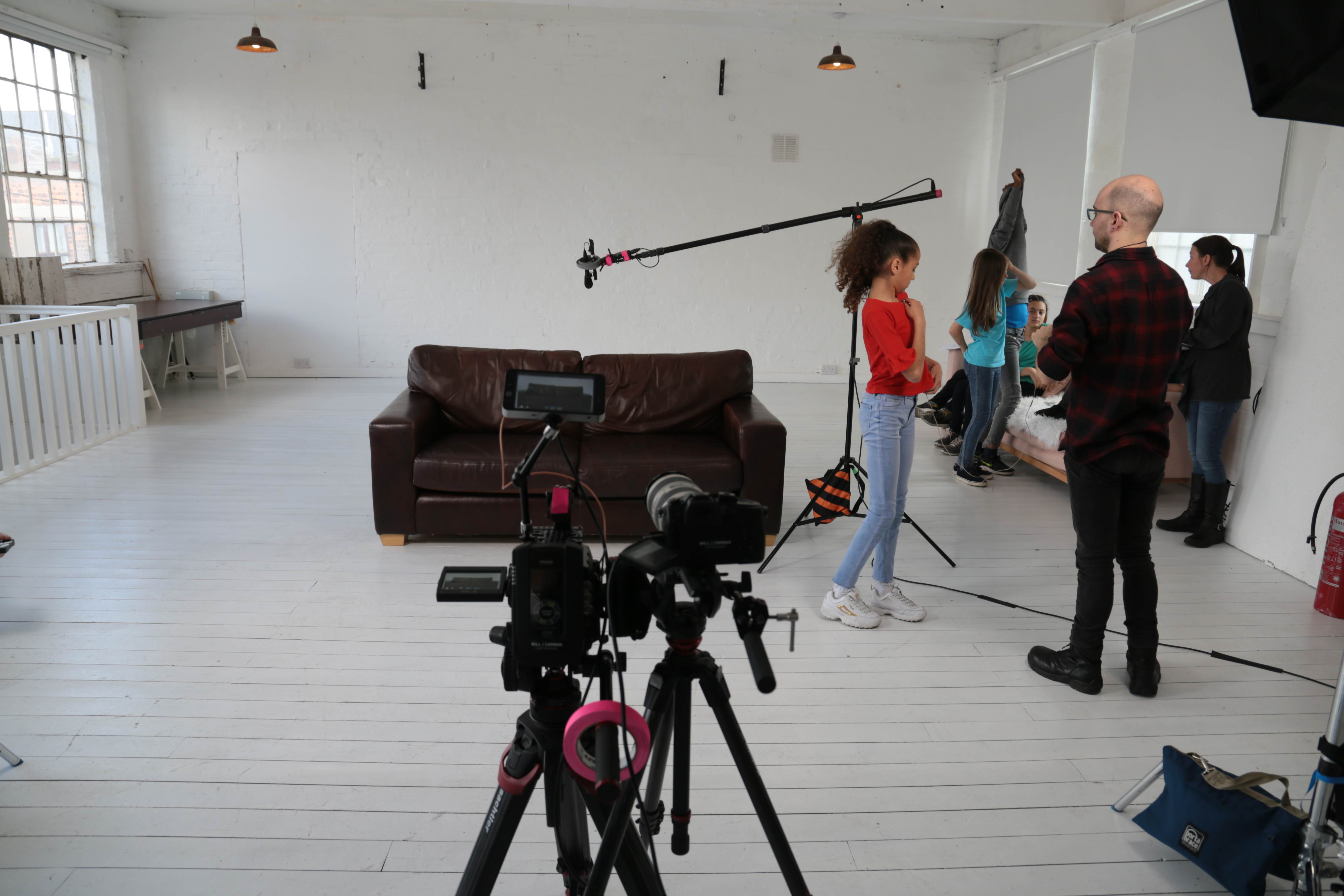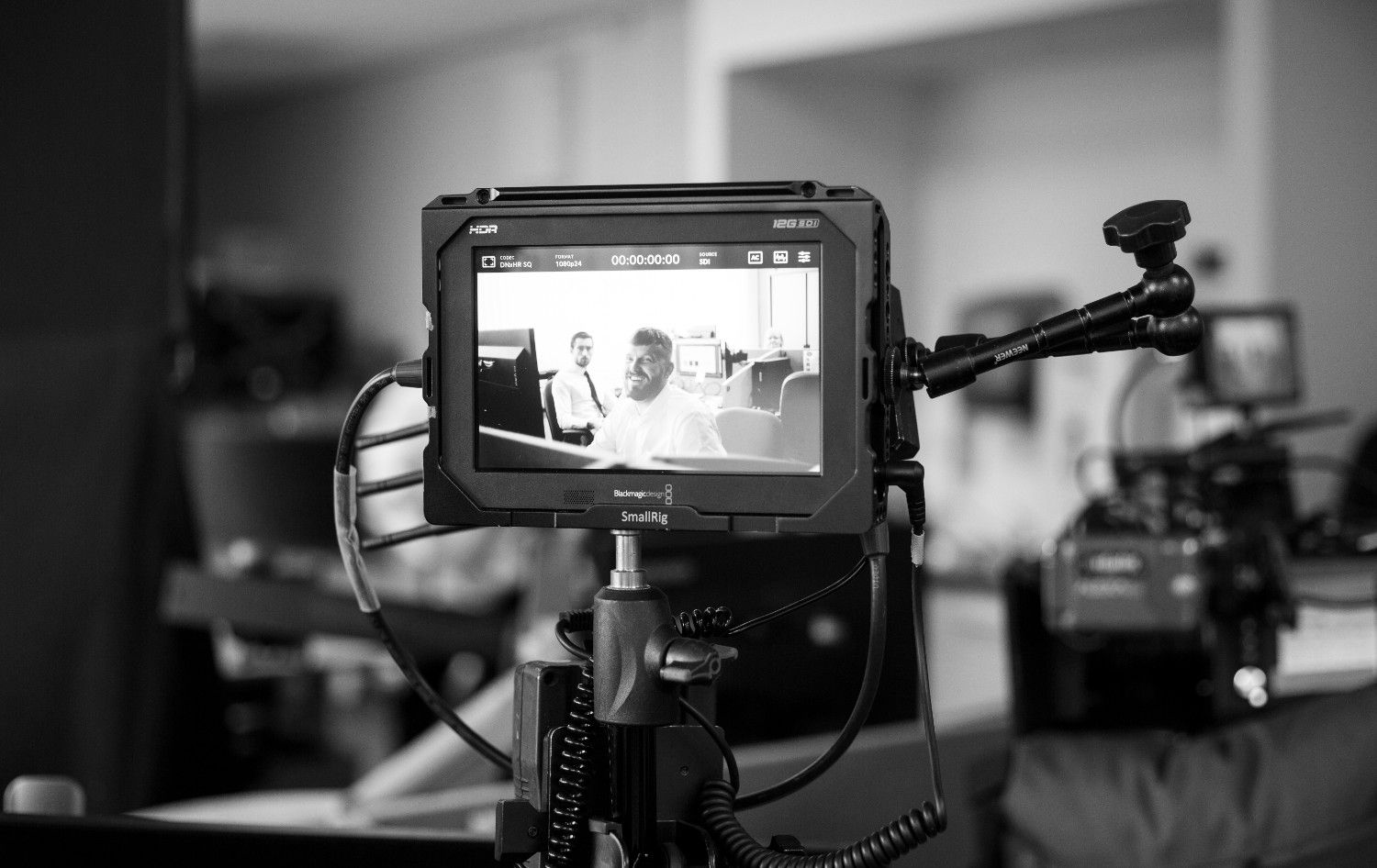In-House vs. Video Production Agency: Finding the Best Fit
Video is not a luxury these days — it's a need. With social media snippets to corporate explainers, video has never been a more effective means of getting noticed and conveying the message. By now, it is no longer a secret - video content produces higher engagement, builds trust, and drives a far better conversion rate than text or static visuals.
For most businesses, the question is not if you should create video content, but how you should create it. The decision usually boils down to two options: hiring an in-house production staff or working with a video production company. As you weigh the pros and cons of each and determine which path is right for your brand, you will need to consider your company's needs, resources, and long-term goals.
This post goes into the weeds on both options. We will dig into the pros and cons of each model, the cost implications, differences in workflow, and some simple advice for how to know which way is right for your business.
Understanding Video Production Approaches
In-House Video Production
An in-house video production is one whereby staff, equipment, and resources are dedicated to producing video content internally. This ensures:
- Brand is in your corner – Internal teams are integrated with your company and have a deep knowledge of your messaging.
- Speed and flexibility – You can shoot and edit fast and be able to change up content at the last minute.
- Long-term scalability - For companies that are consistently creating content, this is an investment that works over time.
This approach is generally employed by large corporations, e-commerce businesses with daily content requirements, and media-focused brands with frequent updates. For instance, a fashion retailer that regularly drops daily product videos may save money over the long term by employing a permanent in-house crew.
Outsourcing to a Professional Agency
Meanwhile, when you hire out video production to an agency, you're passing those tasks and decision-making onto a team of experts with high-level skills and tools. Agencies are best suited for:
- Big budget campaigns include commercials, brand films, and event coverage.
- Specialized strategies such as animation, drone footage, or cinematic storytelling.
- One-off projects where a full-time team would not be feasible.
This approach continues to offer flexibility and a tap into fresh creativity, without the burden of a full-time team within a business. Here, an agency is getting a taste of what it's like to work with a startup, and the startup is getting its first impression using a dynamic visual element.
Ultimately, the In-House Video Production vs. Outsourcing argument boils down to 4 major considerations: control, cost, expertise, and scalability.
.jpg)
The Typical Video Production Process
Whoever's in charge of the process, video production generally has 4 main parts:
Pre-Production
Planning starts here. This includes script and concept creation, storyboarding, scheduling shoots, and handling budgets. It is the basis for clarity and fluid performance. Bad planning often results in wasted time and extra costs.
Production
This is the filming stage. Its part cameras, part lighting, part sound recording, part set design, and part direction. The quality of the final result already starts here. A badly lit interview, say, can sabotage the most potent message.
Post-Production
Editing occurs, in which the raw footage is turned into a polished clip. That's everything from trimming, color correction, flipping in music, graphics, animation, sound design, everything. Agencies often have full editing departments, but in-house teams may have to trust in all-rounder.
Distribution
The final video is uploaded and shared on various platforms, including social media, email campaigns, and other marketing avenues. Distribution is how influential the video will become.
Agencies often have efficient processes and established practices, whereas in-house teams can be more flexible but may lack expertise in advanced areas.
.jpg)
Pros and Cons of In-House Video Production
Advantages of In-House Video Production
- Creative Control & Brand Consistency – You exist as a company, you know the rate of speech, vision, and runway of where you were to where you are now. All the contents follow the brand identity.
- Quick Turnarounds – Need a video update in a hurry? In-house teams can shoot and edit in hours rather than being constrained by external schedules.
- Economical in the long run – As businesses need lots of content regularly, the salary and hardware costs are spread out in the long run.
- Privacy & Security – Sensitive data, such as unreleased product features or company-private updates, stays within the company.
- Cultural Insight – Your LinkedIn writer will understand how things work in the workplace and the most authentic way to showcase your strengths.
Disadvantages of In-House Video Production
- Expensive to get started – When it comes to hiring great talent, expensive cameras, software, lighting kits, etc., the initial investment is substantial.
- Limited Resources of Expertise – They may not have the expertise to handle advanced animation, motion graphics, or cinematic direction independently.
- Operational Overhead – Management has to recruit, train, schedule, and address technical issues.
- Risk of Burnout – In a small team that needs to produce a large amount of content in a short time, creativity fatigue can occur.
- Tech Refresh – Tech becomes obsolete so fast that you need to keep reinvesting.
Pros and Cons of Outsourced Video Production
Advantages of Outsourcing
- Specialty Expertise – Agencies have lots of experienced directors, editors, animators, and shooters.
- Professional Results – High-end cameras, drones, and editing tools are complemented by certified instructors.
- New Viewpoint - Creative perspective can be very different from within and provide new and inspiring storytelling.
- Budget Friendly for Limited Work – If you only need video very occasionally, not to worry, pay by the job and fugged about it those full-time salaries and gear charges.
- Scalable- Scale projects as needed up or down without rearranging internal resources.
Disadvantages of Outsourcing
- Less Creative Control- You may have to sacrifice on style or adjust to the agency's workflow.
- Communication Barriers – It may take some time for agencies to understand the tone and values of your brand fully.
- Increased Project Costs– Although flexible, per-project rates can become expensive for businesses requiring frequent video content.
- Scheduling Issues – Companies are usually busy with many clients, so work may not start as soon as you'd like.
- Relying on Other Teams – If you rely on the agency and they stop producing videos, your video style might have to change, too.
Cost Considerations and Hidden Expenses
If you're deciding between in-house and outsourcing, cost is king—but it's not just about money.
Costs of an In-House Team
- Salaries & Benefits – A staff team (videographer, producer, editor) can be in the high six figures per year.
- Software & Licenses – Continued costs of editing software, music, and stock footage.
- Learning & Growth – Training & Development in the form of workshops or courses to maintain skills.
- Operational Overhead- Office space, utilities, and management are hidden costs.
Costs of Outsourced Agencies
- Project-based fees - One-time cost for deliverables.
- No Overhead – NOCs have to oversee in-house equipment, staff, and upgrades.
- Flexibility of Budget – Companies can set costs according to the size of the project.
- Bundle of expertise – Some providers bundle strategy, scriptwriting, and distribution support.
- Travel & Location charges – Travel & location expenses may apply for individual shoots off-site.
For companies with large, consistent video needs (say, campaigns or the occasional flow of anywhere). Whether you're the occasional email sender or have a big, continuous emailing list, YMLP is your simple solution for professional results, with the freedom to build it your way.
In-House Video Production vs Professional Video Production: When to Choose Each
Go In-House If:
- You must have regular, predictable video production (such as weekly product demonstrations or social posts).
- Consistency in brand voice and messaging is key.
- Content that must remain confidential includes internal company training and pre-launched product material.
- You have enough capital to invest in long-term equipment and staff members.
- You're intent on having complete creative freedom with no outside compromises.
Go Outsourced If:
- You only need it sometimes, or for major campaigns.
- You need a high-end skill like 3D animation or aerial drone videography.
- You need fast delivery at scale, but don't want to pull focus from your internal team.
- You're looking for creative direction and cutting-edge storytelling.
- You demand flexibility and do not want to commit to long-term deals.
Hybrid Approach
Most recent companies are now veering toward a hybrid approach: companies with a small in-house operation for everyday social or fast content, who outsource big projects to agencies. This combination brings in the speed and the familiarity of local work, but also the quality and professionalism of outsourcing professionals. A tech company, for instance, might use its in-house team for product demo videos but pass brand campaigns to agencies for polished cinematic output.

Conclusion
Whether your choice is in-house vs. outsourcing video production will naturally vary according to your business aims, resources, and content strategy.
- High video-demand companies benefit from brand consistency, speed, and long-term cost efficiency through in-house production. But you need to invest a lot to get it set up, and it takes a lot of maintenance.
- Outsourcing offers companies the opportunity to tap into high-level expertise, state-of-the-art resources, and innovative ideas without having to make them a part of the payroll.
- Hybrid models are gaining popularity—combining the efficiency of an internal team with agency expertise.
For most brands, outsourcing makes sense if the goal is to execute high-quality, high-impact content without the overhead of an in-house production team.
It's there that Simply Thrilled fits in. Simply Thrilled has more experience than anyone else in luxury and technology video content. Our team expertly blends creative brilliance with technical know-how, helping businesses engage audiences in effortlessly memorable ways. By providing versatility, new ideas, and a cinematic experience, Simply Thrilled also guarantees your brand message is seen and remembered. For brands looking for the right mix of creativity and get-it-done-mess, we can be the outsourced partner that feels like an in-house member of your team.
FAQs:
1. What is the most significant benefit of having an in-house video production team?
There are a few big benefits, but one of them is, of course, total creative control and consistency of brand. An in-house team is that much more plugged in to your culture, values, and goals as an organization. This knowledge ensures that every single video we create matches your brand and message. Being able to reach straight in also means quicker revisions, more seamless collaboration, and better alignment with the rest of your marketing.
2. How can I be sure that outsourcing is cheaper?
It's cheaper to outsource if you only have occasional seasonal or high-level video needs. Instead of spending on round-the-clock salaries, training, and equipment maintenance, you pay for projects as needed. This flexibility will reduce your expenses while enabling you to access top-notch specialists and unique tools without the burdens of long-term commitments.
3. Can I use a hybrid model?
Yes, many companies do a great job with a hybrid model. You will be able to maintain a small, high-performing internal team to handle the daily, quick-turn content, and outsource big or complex projects to agencies. It's nimble and cost-effective, but also an excellent output printer when the time calls. For growing companies, this often provides the best of both worlds.
4. Do the agencies also acquire the video distribution?
Yes, plenty of video agencies will both make videos and help distribute them. Services might take such forms as social media strategy, search engine optimization, and targeted paid campaigns. This makes sure that your videos are put in front of the audience they were intended for. By outsourcing distribution, you save time, eliminate the guesswork, and get the most out of your investment.
5. Which approach is better for small businesses?
It makes more sense to most small businesses to outsource. It saves the price, the capital cost for either equipment or single men, and access to experts. The agencies lend expertise in creating the kind of polished videos that small groups might not otherwise be able to produce. Outsourcing can also mean flexibility to scale video efforts up or down on demand.



.jpg)
%20(1).jpg)



